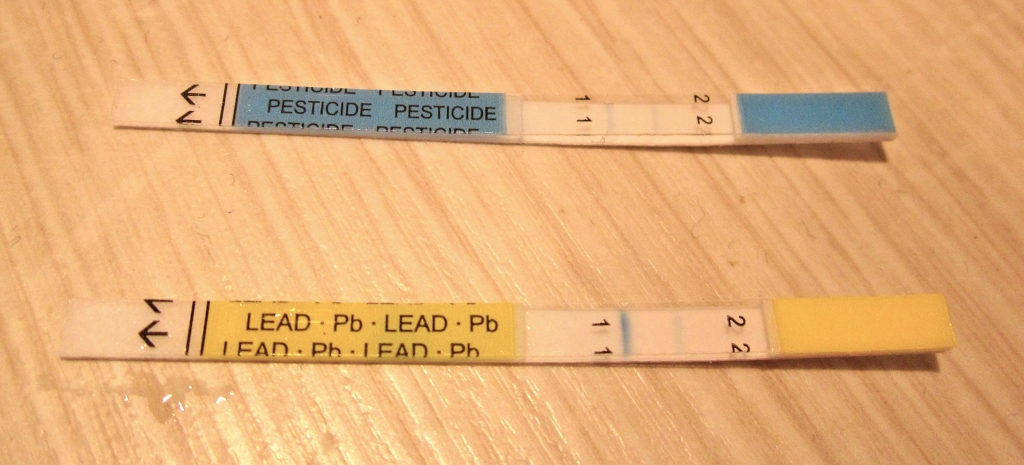Reading Time: 5 minutes
After we recently discovered a problem with our home water filtration system, I began looking for a convenient and affordable way to test the quality of our drinking water. We upgraded our system so that it was practically brand new but I wanted to be reassured that the filter was doing everything it was supposed to.
I came across the First Alert Drinking Water Test Kit on Amazon so decided to give it a try. In the meantime, we continued to either drink bottled water or boil our water at home and thankfully the test kit arrived really fast in the mail.
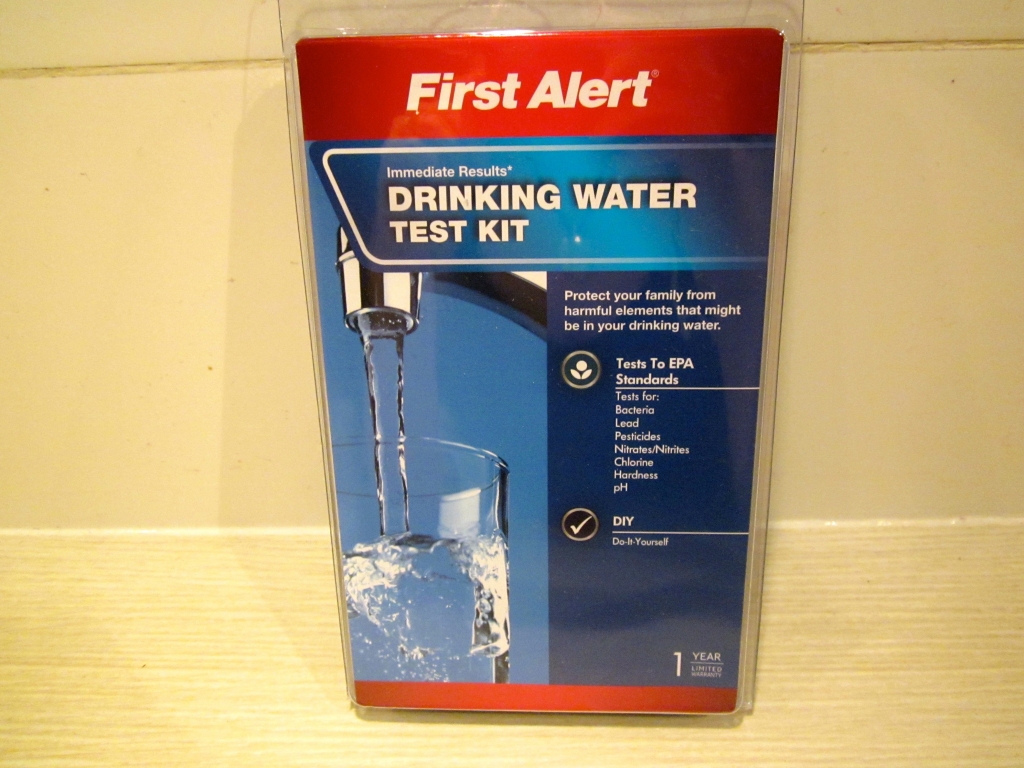
The First Alert Test Kit contains everything you need to find out easily and accurately if your drinking water has unsafe levels of 8 common contaminants:
- Bacteria
- Lead
- Pesticides
- Nitrates/nitrites
- Chlorine
- Hardness
- pH
It includes testing materials for a single sample only, so if you want to test several samples or to compare different samples you will need to order more than one kit.
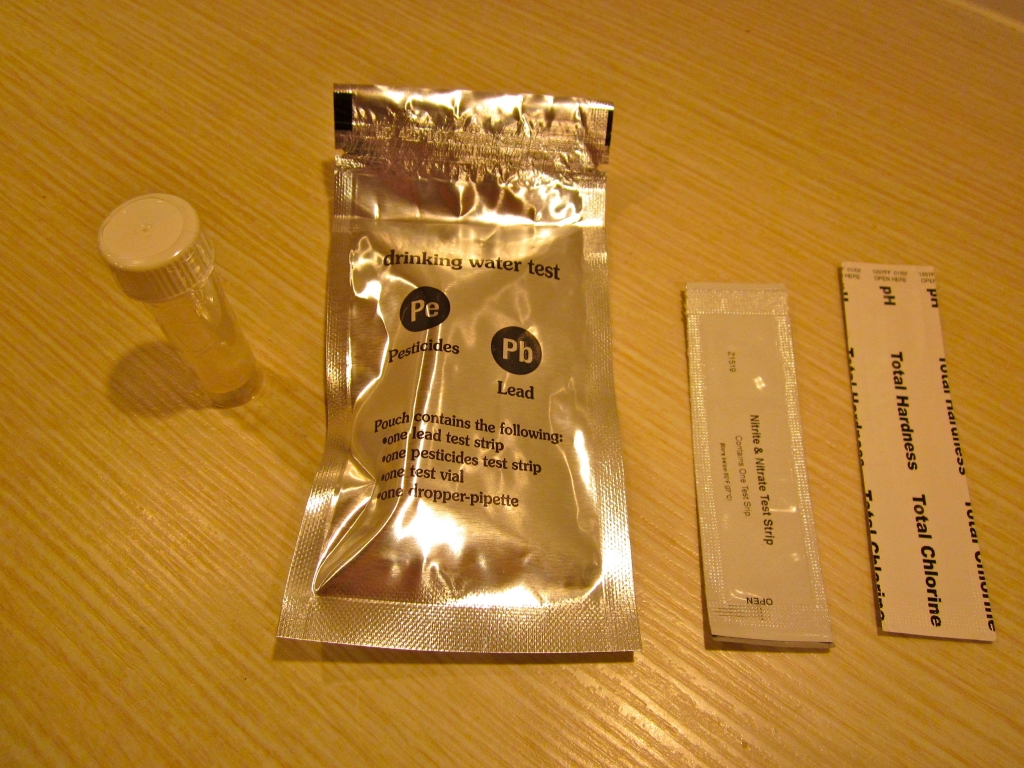
As I started the testing process I was reminded of one of my earliest jobs when I worked as a laboratory assistant. But don’t worry. These tests are extremely simple to perform at home.
The Water Test Kit tests to EPA standards.
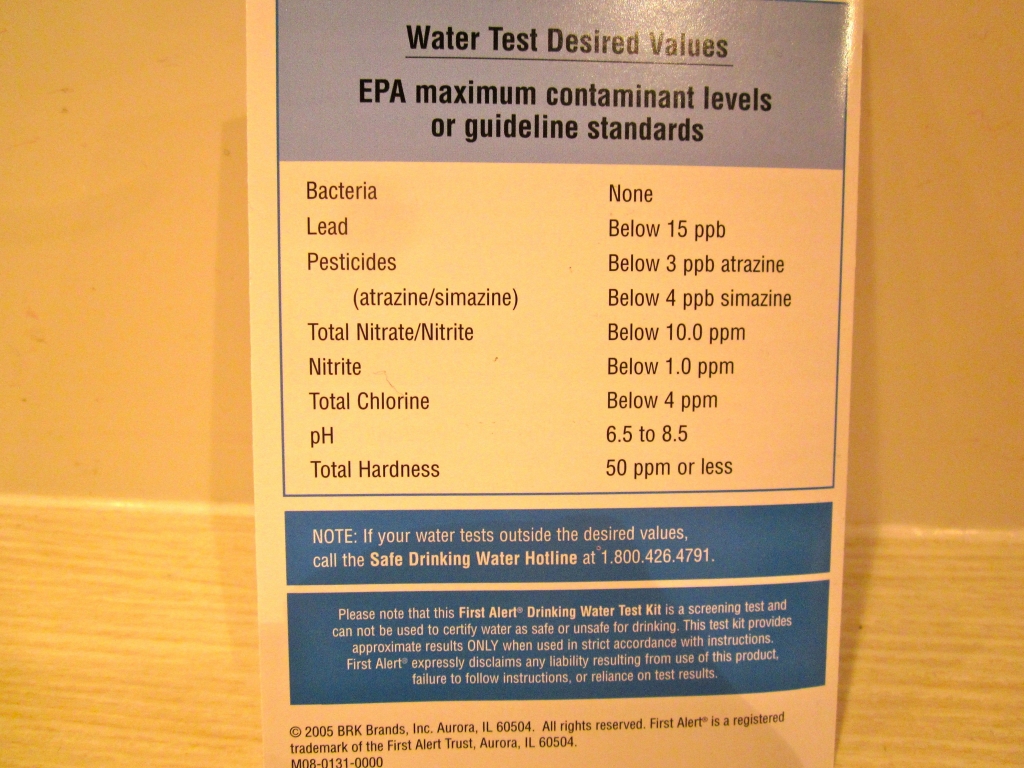
The first test was nitrate which comes from fertilizers and animal waste products. This chemical contaminant is of serious concern for babies and young children as it has been linked to developmental problems and even fatalities.
The test took about one minute to show and as you can see our water was very low in nitrate. I later did a comparison with the tap water, which was slightly higher but still below the recommended EPA limits.
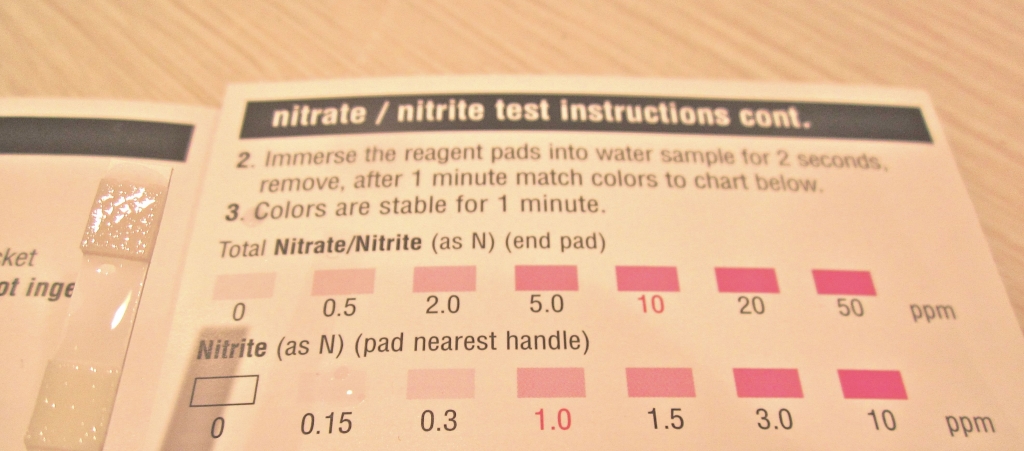
Next was a combined test for chlorine, water hardness, and pH, which provided instant results.
Chlorine byproducts can increase cancer risk, cause stomach discomfort, and have adverse effects on the nervous system. They are also a cause of bad taste and odor in drinking water.
Water described as “hard” is high in dissolved minerals, specifically calcium and magnesium. Hard water is not a health risk – in fact, the health benefits of mineral-rich springs are well-known – but it can cause problems because of mineral buildup on water pipes. It also reduces the efficiency of detergent performance so you need to use more to properly clean dishes and laundry.
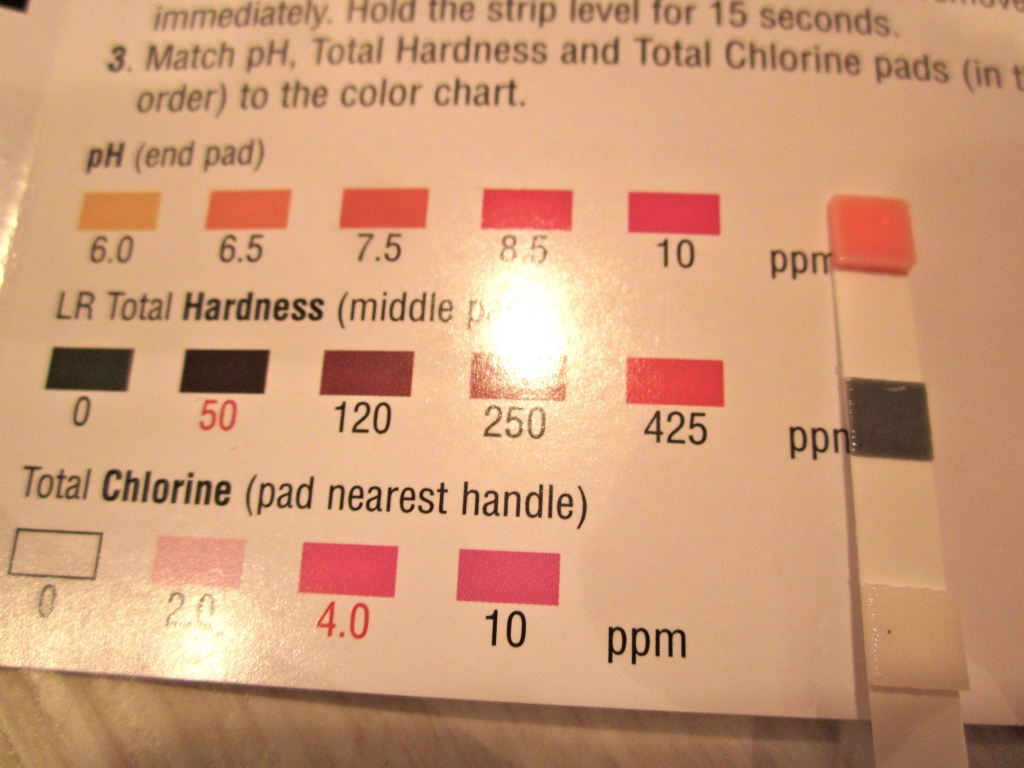
As you can see there was no chlorine in the sample and the water hardness was very low.
When it came to testing the pH the result appeared to be somewhere between 6.5 and 7.5. Ideally, water should be at least 7 or slightly higher so I consider this result inconclusive.
If you really want a more accurate reading of the pH levels of your water I wouldn’t rely on this test due to this lack of specificity. You could get a much better result using these pH test strips.
I also did a comparison with the tap water and these results were the same except for hardness, which was closer to 120 – well above the EPA recommendations.
I then performed the tests for lead and pesticides. Lead causes developmental harm, neurological damage, and kidney damage. Pesticides are associated with a higher risk of cancer. These tests took a little longer to give results; ten minutes.
The test for lead was negative, which can be seen by the darker line towards the left.
The pesticide result was either positive or inconclusive due to both lines appearing very light. I repeated the test and the results were the same for both tap and filtered water. So if we want more information about the pesticide levels in our water supply it seems that we need a more sensitive alternative test.
The final test – and the one that I was most concerned with – was for bacteria. Before you can get the results it requires 48 hours, to allow for the growth of any bacteria that are present.
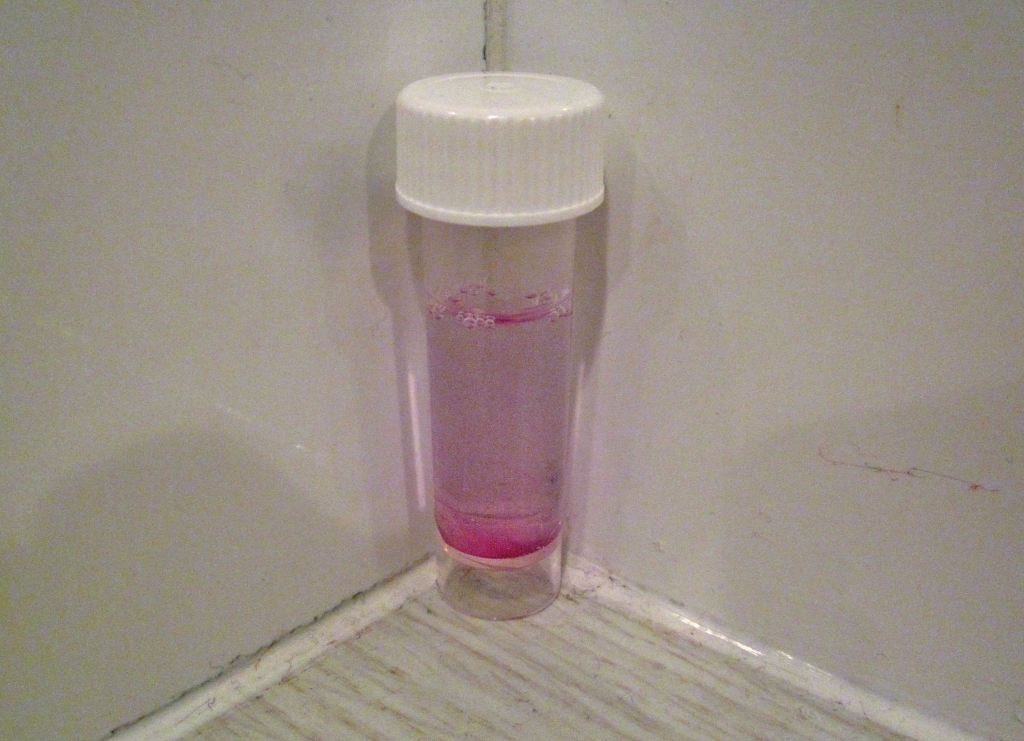
A purple color indicates the absence of bacteria and a yellow color alerts you to the presence of potentially harmful bacteria, such as E. coli. After 48 hours the sample did not change color. This has certainly given me peace of mind that our water supply is now safe for drinking and that the UV filter is an effective method for eliminating bacteria. I’m currently running a test on the tap water for comparison and still waiting for the results.
UPDATE: 26/6/2015
To find out more about our home water supply and to be sure about the safety of our drinking water, I decided to run the test again, while also doing a comparison with the tap water.
The sample on the left is the UV-treated water and on the right is regular tap water. The difference after just 36 hours was obvious!
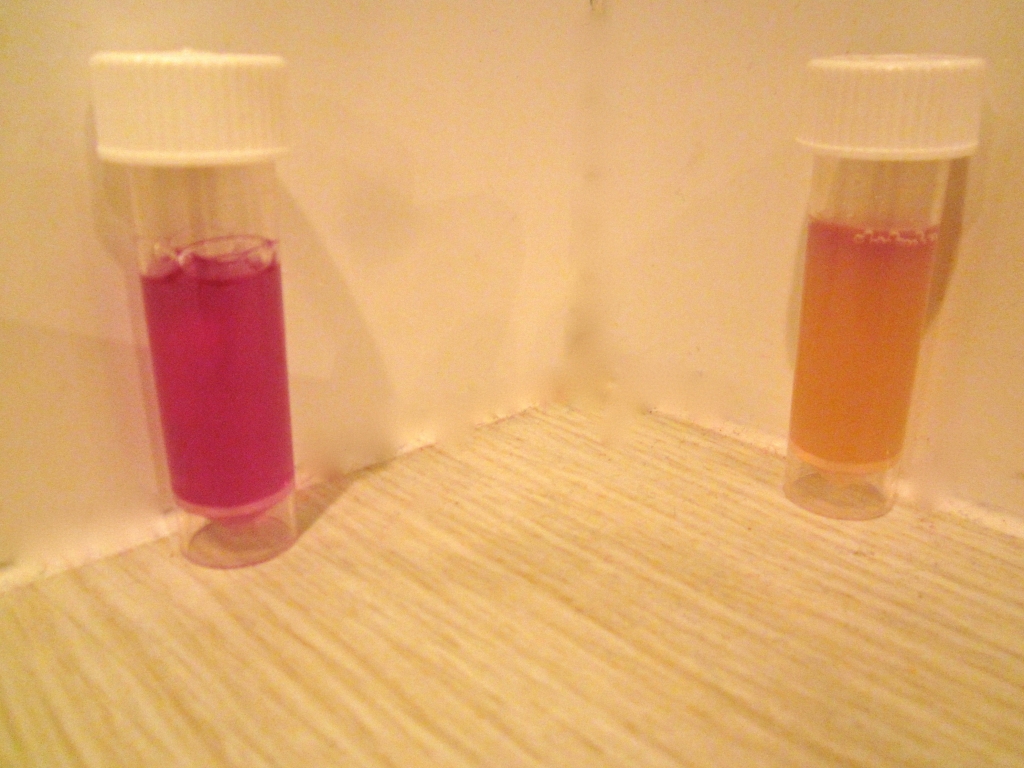
This test confirms the presence of E.coli in the Siem Reap tap water supply. This is why we are careful to only use filtered water for drinking, cooking, washing our fruits and vegetables, and brushing our teeth.
Overall I would recommend the First Alert Drinking Water Test Kit if you have concerns about the safety of your home water supply, especially bacteria, nitrate, lead, and chlorine. It appears to be less reliable for testing pH and pesticides so you may need to do further evaluations if these qualities are of concern to you.
